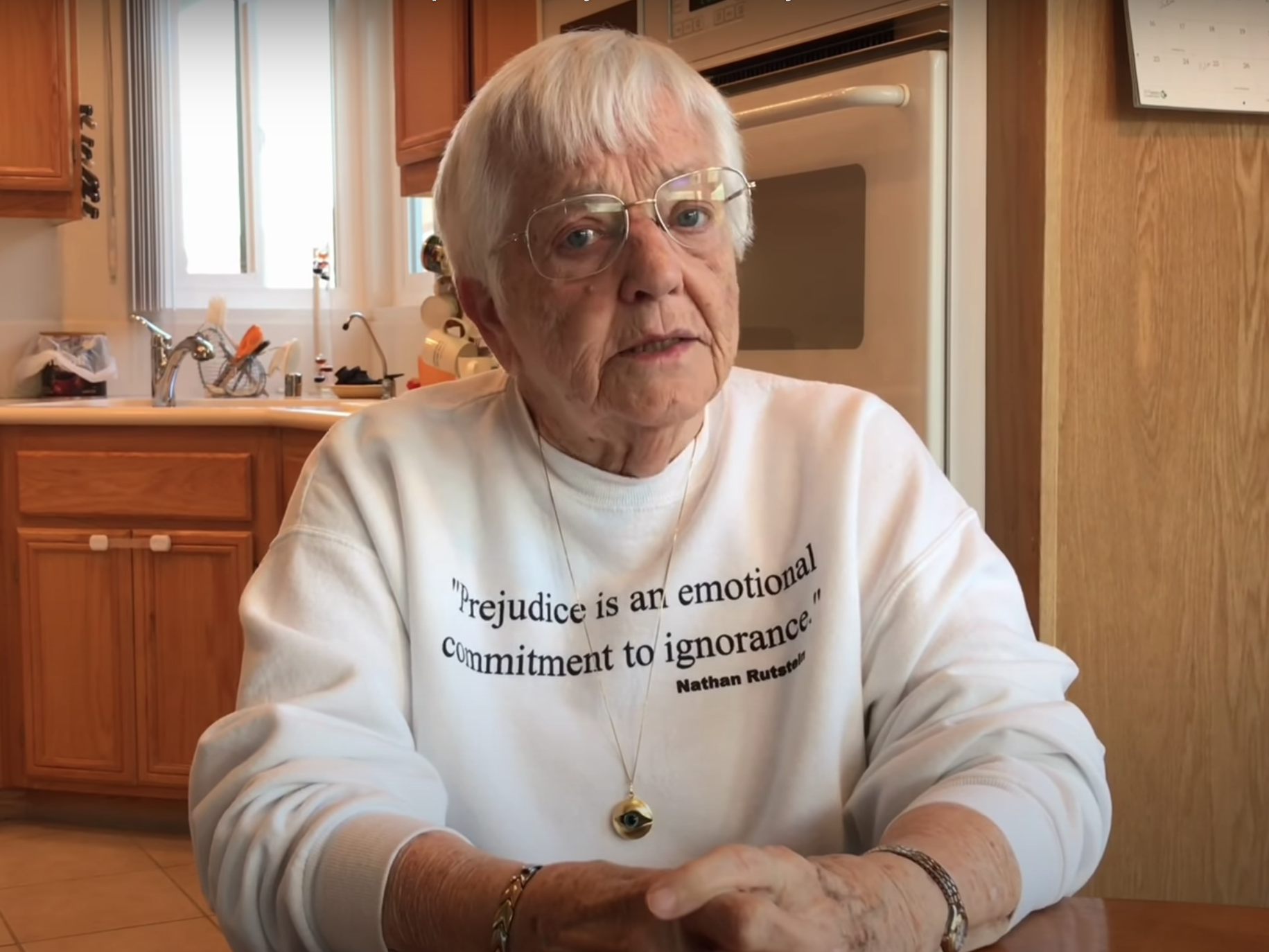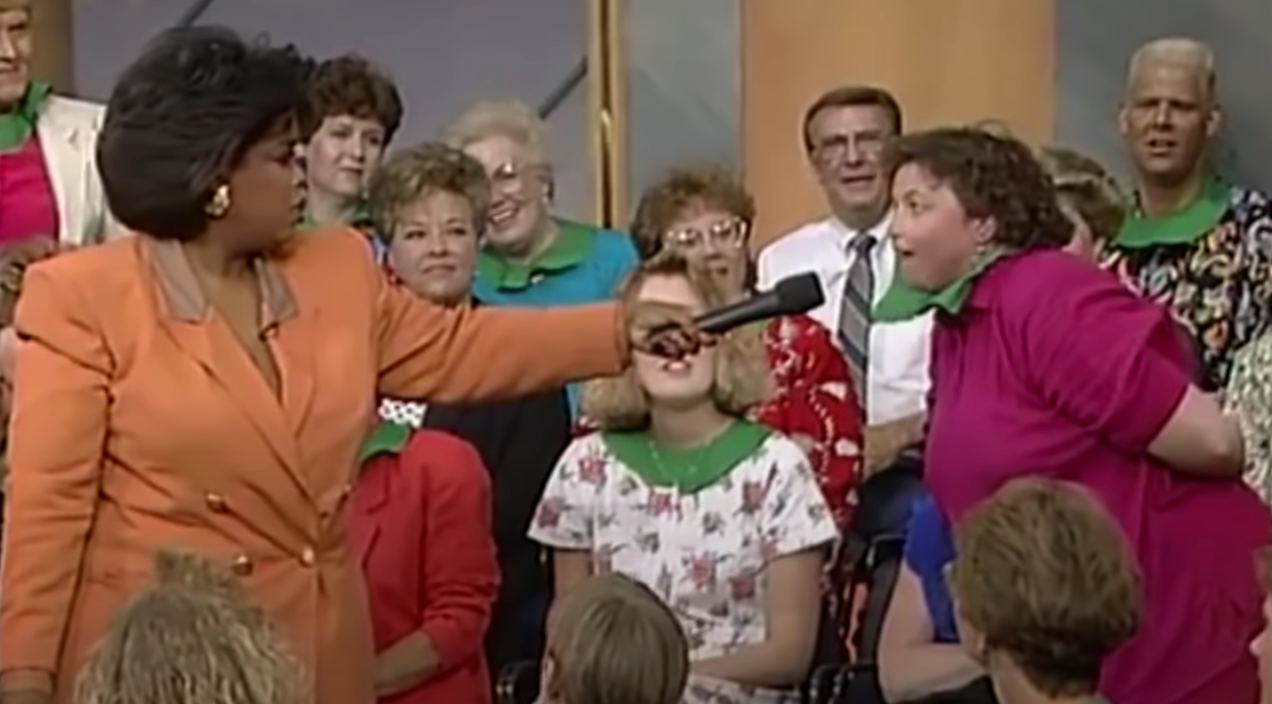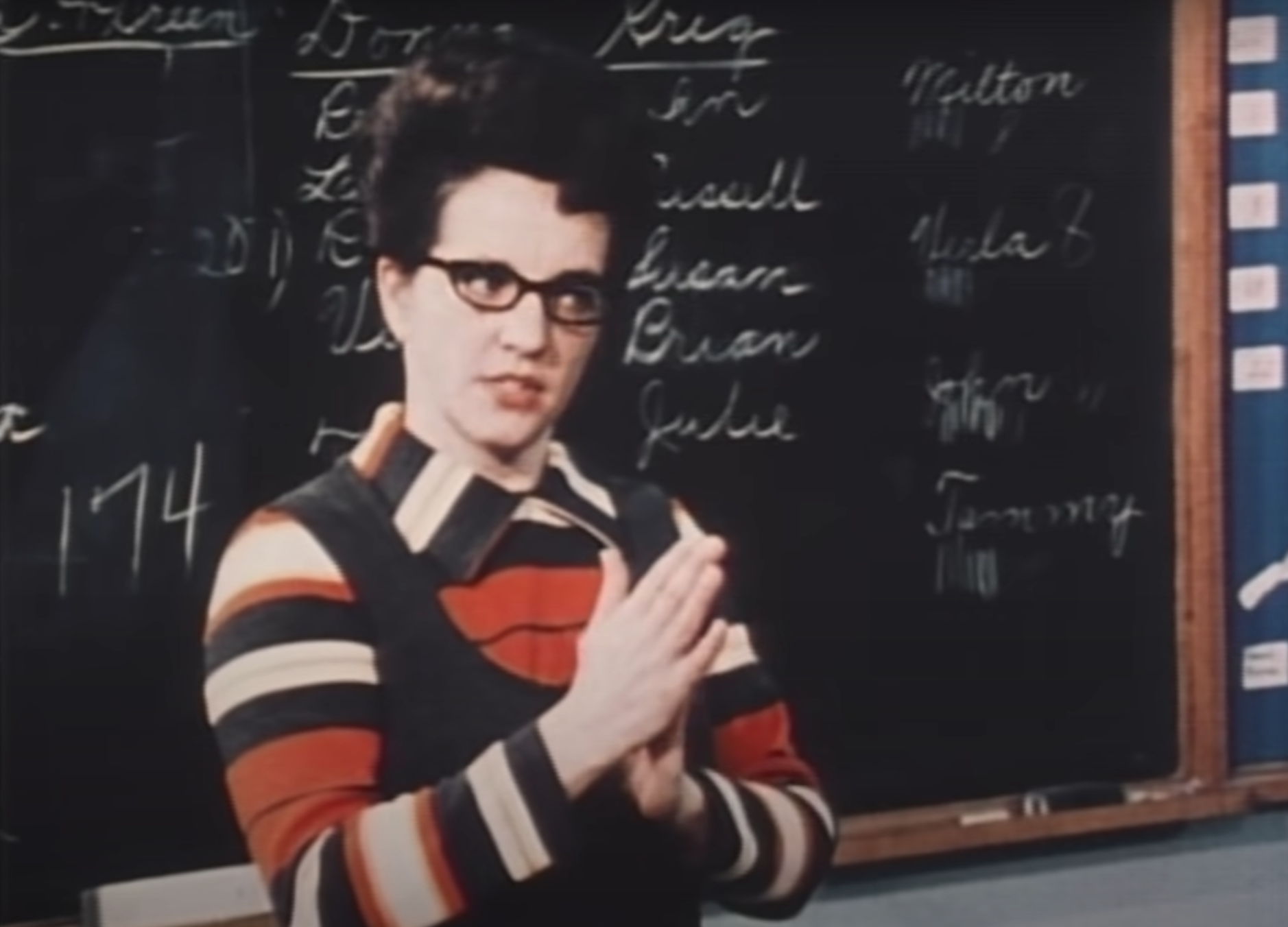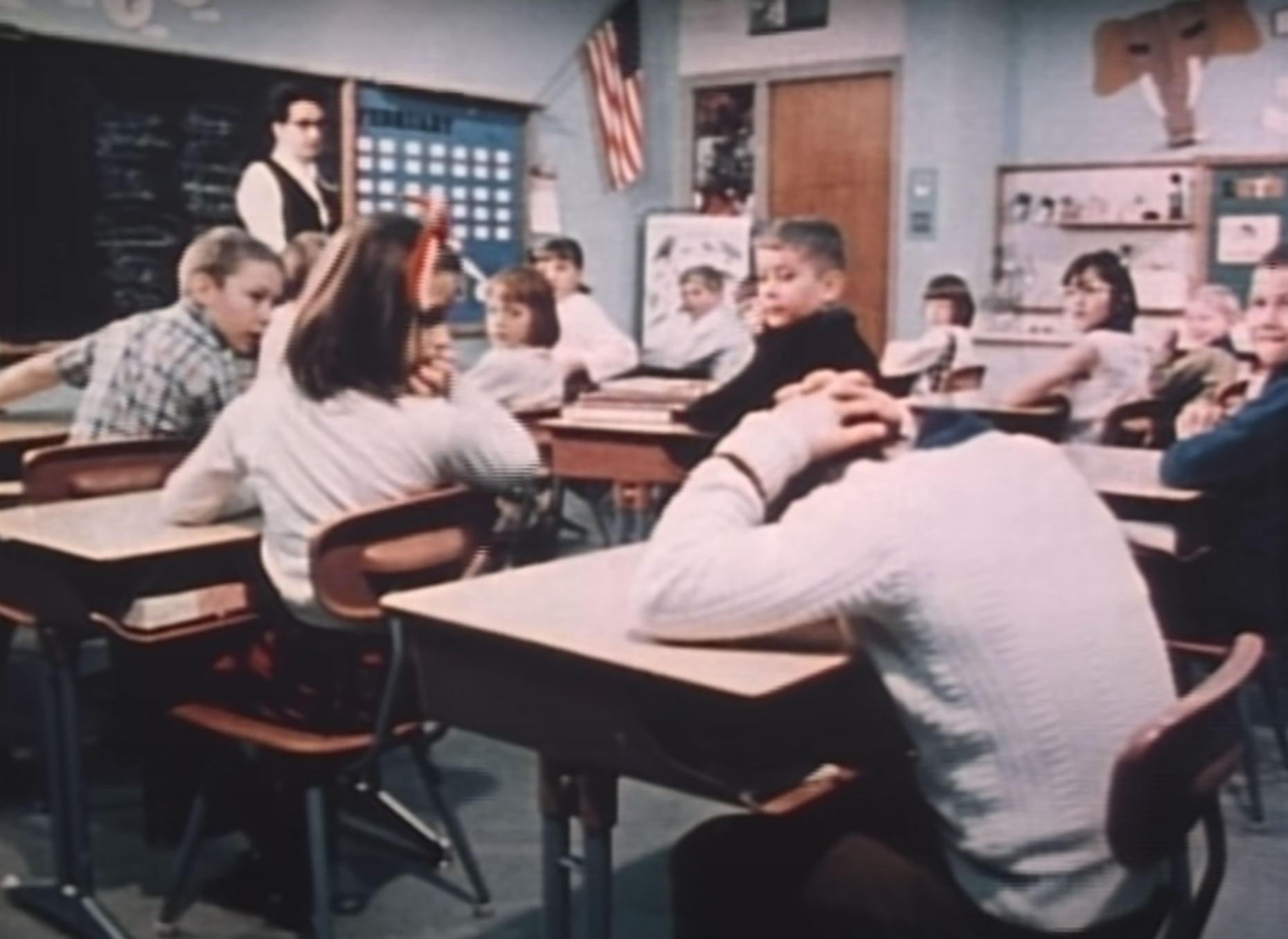‘We’re all members of the same race’: Jane Elliott on the importance of education in unlearning prejudice
Brianna Holt speaks to the Iowa teacher who in the 1960s developed a powerful exercise about discrimination

The day after Martin Luther King Jr was assassinated in 1968, the schoolteacher Jane Elliott scrapped her lesson plan – teaching her third graders the Sioux prayer about not judging another person until you have “walked a mile in his moccasins – for an experiential learning exercise.
She split the children at her all-white school in Riceville, Iowa, into two groups based on their eye colour: brown-eyed students in one, blue-eyed students and anyone else in the other. The members of both groups received treatment based on that one arbitrary quality, the pigmentation of their irises.
Over the course of two days of instruction, she convinced the blue-eyed students that they were not as smart, worthy or human as their brown-eyed peers, who were rewarded for their supposed superiority. The exercise demonstrated for the students how easily prejudice could be learned, and hopefully unlearned.
“Racism is ignorance based on being miseducated. Racism is a result of being indoctrinated instead of educated,” Elliott says by phone from her home in Iowa in early July. “I don’t sugarcoat racism.”
When teaching, or speaking to a reporter, she uses a strict tone. There is no tolerance for talk of “colour blindness”, no coddling of so-called white fragility. There is only understanding how it feels to be mistreated based on meaningless standards.
Her uncompromising, one-size-fits-all approach to anti-racist education differs from that of many contemporary writers and thinkers, who emphasise the importance of hard conversations, visible ally-ship, box ticking and historical fluency. Perhaps it is because she has seen history repeat itself.
“I was born the year Adolf Hitler and Franklin Roosevelt came to power, in 1933. I remember what the Nazis did from 1933 until 1945. And I saw that same thing happening in this country where skin colour is concerned,” Elliott said, recalling the 1960s.
Although black thought leaders had spoken directly to white people about systemic racism for years, as a white woman herself, Elliott was able to make the pain of discrimination personal for them with the “blue eyes, brown eyes” exercise. It was not unusual to observe tears streaming from the eyes of blue-eyed participants, who had likely never experienced serious discrimination based on their appearance.

That the exercise resonated with people led to a second career for Elliott. She held lectures and workshops all across the United States, including an appearance on The Oprah Winfrey Show in 1992, a conversation with Angela Davis in 2018 and a seat on Red Table Talk that same year.
Now, in the midst of stronger-than-ever support for Black Lives Matter and what may be the largest social movement in US history, she has once again emerged as a voice on race.
Adriana Cardenas, 24, became aware of Elliott a few weeks ago when a video of the third-grade exercise was shared by someone in her Facebook feed.
Just stop believing that there’s more than one race. Realise that we’re all members of the same race. That’s the human race
“I remember thinking that it was a super-charming video where you see kids that are very clearly racist at the beginning of the video do a complete 180 by the end of the video, having learned a lesson after three days. I definitely think it’s a good ‘intro to racism’ video, especially for its time,” Cardenas, a software engineer in Austin, Texas, says. “But it is really appalling that it’s being shared in 2020.”
“You would think people would be sharing this going, ‘Look how far we’ve come,’ but it seems there’s been barely any progress,” she adds.
Elliott is familiar with the attention her videos have received online, and she is happy to see conversations about racism happening on social media.
“I think that social media, including my videos, can and must be one of the ways to effect change, in the area of racist behaviours, but it isn’t enough,” she says. “Experiential learning is more effective than watching other people’s experience, of course.”

Elliott is all for social media feeds being flooded with anti-racist resources and protest imagery. What she dislikes is the ease and speed with which videos showcasing brutality against black people spread online.
“I think that the repeated showing of black men being killed by the police is attempted intimidation of those men and their mothers,” she says. “It seems to be deliberately designed to show all men of colour what can happen to them if they run afoul of the law.” (Although camera phones have been heralded by some as tools for exposing police brutality, the proliferation of footage has not affected the frequency of such violence.)
Elliott’s more than 50 years of educating people about discrimination and unconscious biases have come with challenges. Aside from the stressful work of frequently implanting oneself into the centre of ignorance, she regrets the suffering that her family endured.
“I didn’t know how this exercise would work. If I had known how it would work, I probably wouldn’t have done it,” Elliott said. “If I had known that our four children would be spit on and their belongings would be destroyed, that they would be verbally and physically abused by their peers, by their teachers and some of the parents of their peers, because they had what that community labelled as an N-word-lover for a mother.”

Elliott’s children weren’t the only family members to face the consequences. Her parents lost their restaurant business after widespread boycotts, her husband was isolated from his friend group, and Elliott was shunned by teachers in her school system.
At 86, Elliott feels it was all worth it and says she has no plans of stepping back from educating people – not until every living person understands that the problem underlying racism in America is easy to identify and fix.
“Just stop believing that there’s more than one race. Realise that we’re all members of the same race. That’s the human race,” Elliott says. ”Every person on the face of the Earth is my 30th to 50th cousin. I get really angry at my pale-faced cousins when they abuse my cousins of other colour groups because of pale-faced people’s ignorance about skin colour.”
The idea that people should or should not see colour has been challenged many times in race education. Often when someone claims they are “colour blind”, it dismisses the experience of those who are different from them.
Elliott wants people to dismiss racial differences and instead focus on only being different shades. Once everyone realises they originate from the same place, no one should feel the need to treat anyone differently. The idea is backed by science but is still difficult for many people to grasp. Which means Elliott isn’t stopping any time soon.
“When am I going to quit? When racists quit,” she says. “Do I have a job for a lifetime? I’m afraid so.”
© The New York Times
Join our commenting forum
Join thought-provoking conversations, follow other Independent readers and see their replies
Comments
Bookmark popover
Removed from bookmarks